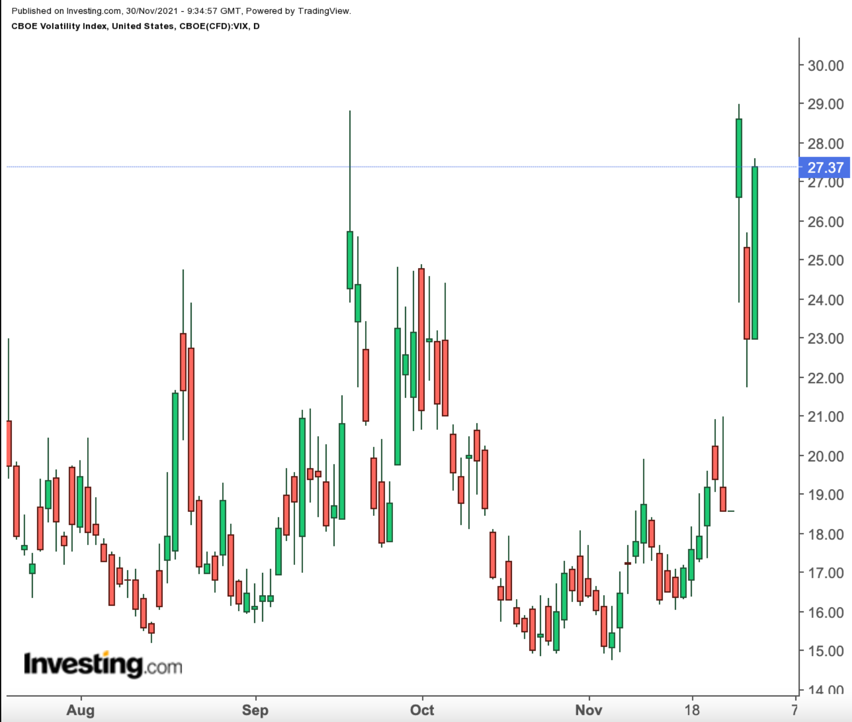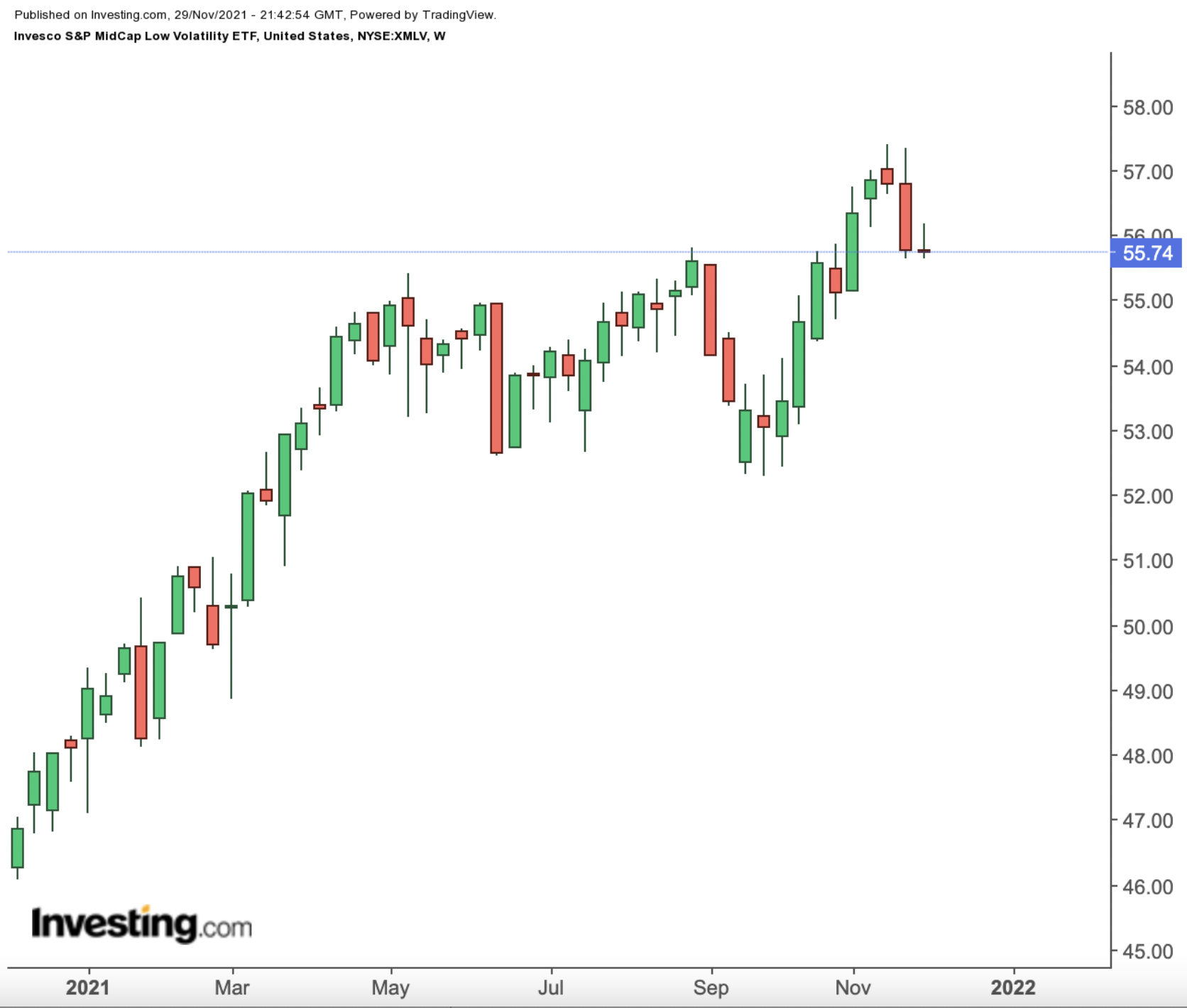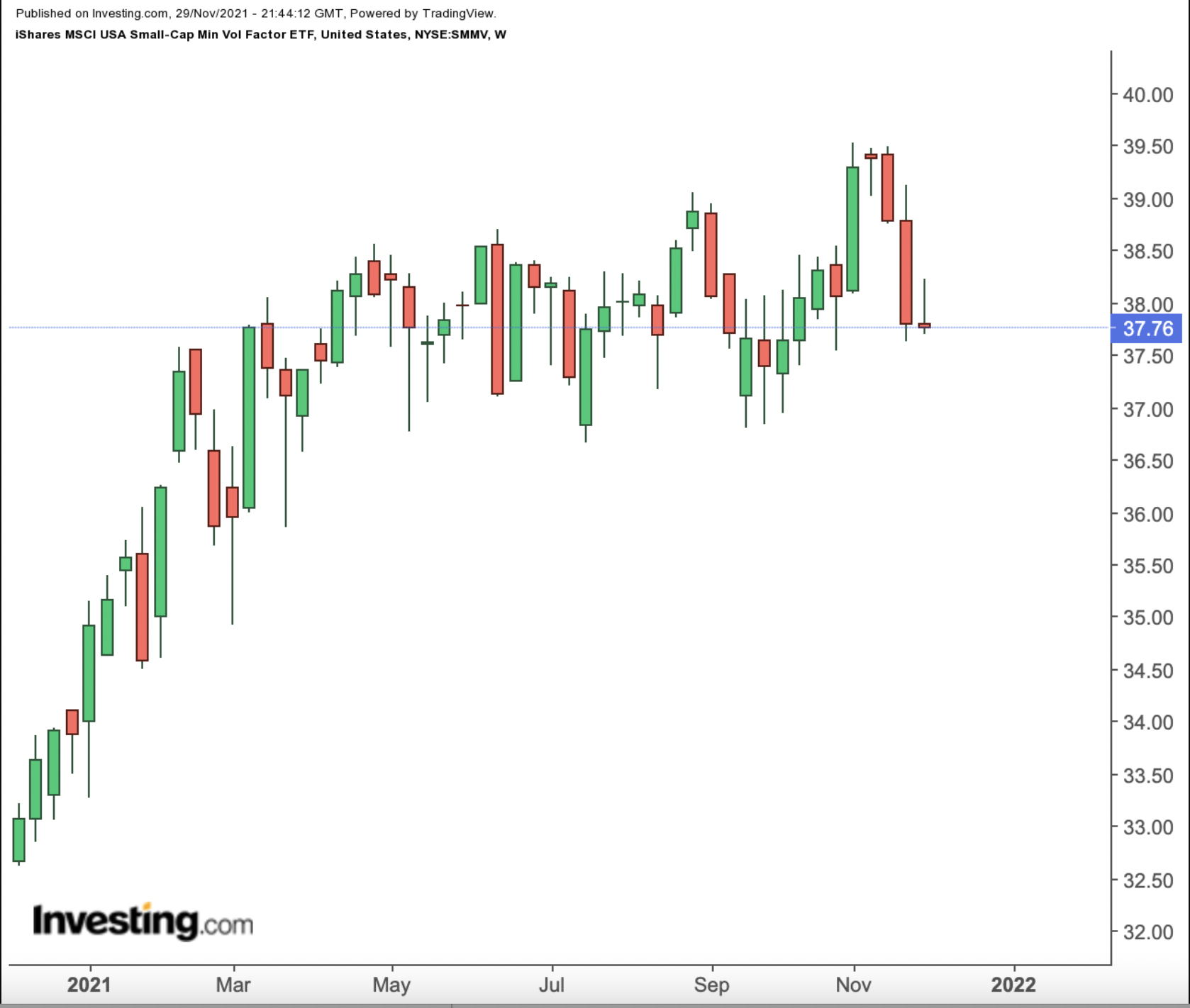Volatility in broader markets has increased following the confirmation of COVID-19 Omicron variant cases across the globe. The VIX, the leading benchmark for US stock market volatility shows the variation in the price of the S&P 500 on Nov. 26 when the level of volatility jumped above 28, a point last seen in January.
The VIX—often referred to as the "fear-index" or “fear-gauge” as navigating increased choppiness can make many investors nervous—is currently hovering around 27.5.
Most financial planners recommend long-term investors should hold a diversified portfolio to reduce volatility. Some experienced short-term traders use exchange-traded notes (ETNs) like the iPath® Series B S&P 500® VIX Short-Term Futures™ ETN (NYSE:VXX) to manage volatility.
Today, we introduce two other exchange-traded funds (ETFs) that could be appropriate for investors looking for strategies that offer upside in equities with low volatility.
1. Invesco S&P MidCap Low Volatility ETF
- Current Price: $55.74
- 52-Week Range: $45.47 - $57.41
- Dividend Yield: 1.05%
- Expense Ratio: 0.25% per year
The Invesco S&P MidCap Low Volatility ETF (NYSE:XMLV) invests in 80 medium-capitalization stocks. These names come from the S&P Midcap 400 Index and have the lowest realized volatility over the past 12 months. Fund managers rebalance the ETF quarterly.

XMLV started trading in February 2013. The top 10 names comprise about 13% of net assets of $1.35 billion. In terms of sectors, we see industrials (21.50%), followed by real estate (18.45%), utilities (13.66%), financials (11.86%) and materials (11.63%).
Leading holdings include Flowers Foods (NYSE:FLO), which produces packaged bakery products; Lancaster Colony (NASDAQ:LANC), which manufactures specialty foods; leading management consulting group FTI Consulting (NYSE:FCN); industrial real estate investment trust First Industrial Realty Trust (NYSE:FR); and RPM International (NYSE:RPM), which manufactures chemical products, including paints, protective coatings, sealants and adhesives.
The fund returned 15.9% in 2021 and 21.3% in the past year. It saw a record high in mid-November. Forward Price/Earnings (P/E) and Price/Book (P/B) ratios stand at 20.01x and 2.78x, respectively. Potential investors could consider hitting the ‘buy’ button around $48.
2. iShares MSCI USA Small-Cap Min Vol Factor ETF
- Current Price: $37.76
- 52-Week Range: $32.14 - $39.53
- Dividend Yield: 1.35%
- Expense Ratio: 0.20% per year
The iShares MSCI USA Small-Cap Min Vol Factor ETF (NYSE:SMMV) gives exposure to small-cap US equities with lower volatility relative to the rest of the small-cap equity market. The fund started trading in September 2016.

SMMV, which has 344 holdings, tracks the MSCI USA Small Cap Minimum Volatility (USD) Index. The leading 10 names make up about 13% of net assets of $847.2 million.
Health-care stocks have the largest slice, with 17.96%. Next in line are financials (12.43%), real estate (10.18%), industrials (10.08%), consumer discretionary (9.86%) and information technology (9.34%).
Among the leading stocks on the roster are the self-storage REIT CubeSmart (NYSE:CUBE); American Homes 4 Rent (NYSE:AMH), a REIT that focuses on single-family homes as rental properties; Service Corporation International (NYSE:SCI), which operates funeral service locations and cemeteries; Landstar System (NASDAQ:LSTR), which offers transportation logistics and insurance products; and AptarGroup (NYSE:ATR), which provides packaging, dispensing and sealing solutions for the pharmaceuticals, personal care and food industries.
Year-to-date, SMMV returned 11.9%, and hit an all-time high in early November. It is also up 16.5% in the past year. The fund’s P/E and P/B ratios are 21.68x and 2.81x. We’d consider investing for the long run around $36.
